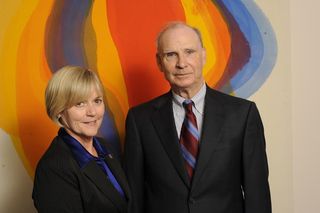A few years ago my younger daughter and I splurged and spent 12 days in Italy, a country I had long longed to visit. The trip was utterly amazing and we managed fairly well despite the language barrier. I guess I must look somewhat native because on two separate occasions Italians approached me for directions and I could only laugh helplessly and indicate that I didn’t speak Italian.
 Recently, I’ve noticed advertising for some pretty spectacular audio travel translators and find myself wondering how having one of those high tech gizmos would have impacted our trip.
Recently, I’ve noticed advertising for some pretty spectacular audio travel translators and find myself wondering how having one of those high tech gizmos would have impacted our trip.
What would be even better is if we had been able to take and master a crash course in Italian!
I was reminded of language differences some time back when preparing to launch an RMS process targeting nursing homes. An attorney at another law firm was coaching me in how to set up our campaign.
We were role playing conversations and approaches and she ran a couple of phrases in nursing home lingo past me but it was as if she were speaking Italian.
I stopped her and said, “Wait! What does that mean?”
“Have you reviewed the nursing home RMS material on the website?” she asked me.
“No, I meant to, but haven’t had time,” I replied.
Hmmmm …… What’s wrong with this picture?
A representative from a law firm positioning itself as expert in the area of Medicaid and VA is going to walk into a nursing home and introduce herself, but will be unable to understand or communicate in their language nor understand their priorities.
Well, worse things have happened. But the point is, the LWP website has hours of materials that can have you speaking “Italian” in no time. You’ll get valuable insight from other professionals who have had incredible success in establishing relationships with nursing homes. Spending the time to work through these materials will give you a true competitive edge from the moment you walk in the door.
What you say and how you present yourself in those first few minutes can mean the difference between being easily forgotten or positioning your practice for consideration as their “go-to” firm for VA and Medicaid apps.
So if your firm is considering a nursing home RMS process, I really hope you’ll brush up on your language skills first! And practice, practice, practice before you knock on the door.
Nedra Catale – Implementation Coach, Lawyers With Purpose














